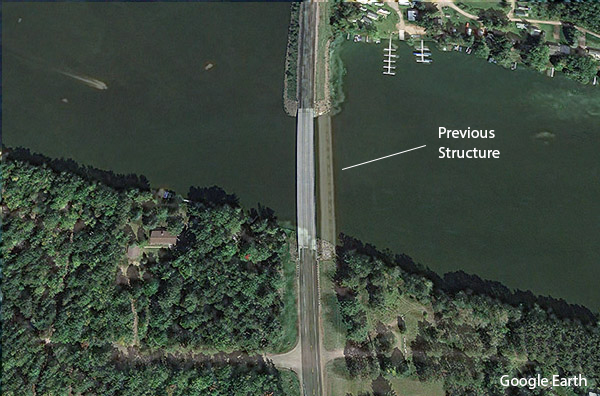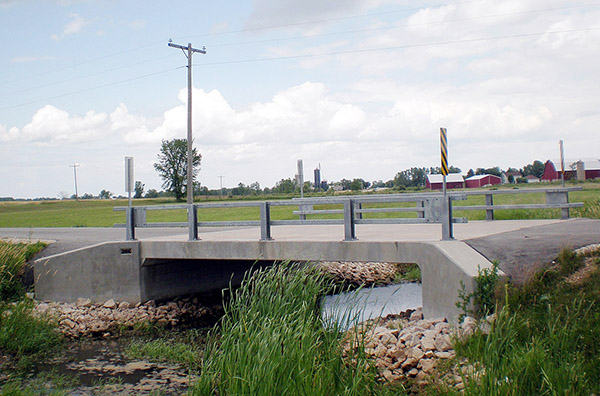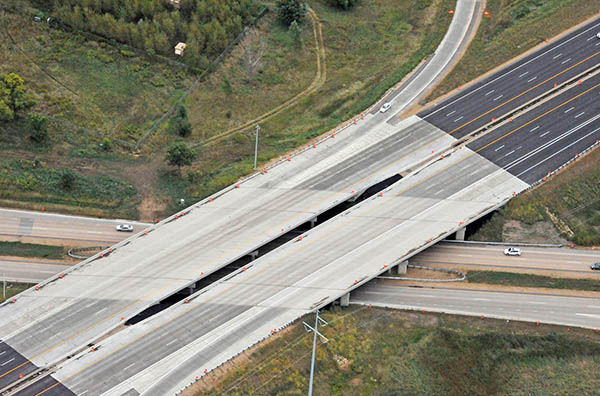Building Bridges without Tangling Traffic

 By Dave Pantzlaff, PE
By Dave Pantzlaff, PE
Quite often in our world of designing bridges for clients, we come across situations where we cannot simply close the road, take out or rehabilitate the existing bridge, and provide a detour for the public while the bridge is under construction.
Maybe the bridge is on a dead-end road, providing the only means of access to homes and/or businesses. Or maybe the nearest bridge is dozens of miles away, making a detour so lengthy that it would be impractical to send drivers around the construction. Sometimes the bridge being replaced is on an interstate or major highway that carries large volumes of traffic and must stay open.
Whatever the case, we have options for replacing or rehabilitating a bridge when a detour is off the table.
Temporary Bypass
One option, the temporary bypass, is a separate structure built adjacent to the existing one that can be used while the existing bridge is removed and a new one is built in its place. When the new bridge is finished, the temporary bridge and bypass are removed. Several factors for the temporary structure must be considered, including the cost to build and remove the temporary bridge, who needs to use it (e.g., farmers driving large equipment), and how its placement will affect any waterways or wetlands.

Construction Staging
Another common construction technique to avoid a detour is building the bridge in stages, which typically involves working on the bridge one side at a time. Traffic gets shifted to one side of the bridge during work on the other side in the first stage. The process is reversed during the second stage, keeping the bridge open throughout construction. This sometimes involves reducing traffic to a single lane, using stop signs or traffic signals to alternate which direction the traffic flows on the single lane.


New Alignment
It sometimes makes sense to build a new bridge at a nearby crossing location, often right next to the old bridge. That allows traffic to remain on the existing roadway during the installation of the new bridge. In this situation, the existing bridge is used throughout the construction period and then torn down after the new bridge opens.

Accelerated Construction
When speedy construction is of the utmost importance to a client, accelerated bridge construction (ABC) can help. Our bridge design of I-39 over Siggelkow Road in Dane County, Wisconsin, included precast pier elements, which consisted of the pier columns and pier cap. These pier elements gave the contractor the opportunity to construct them off-site, where they were then transported to the project site and installed much faster than with traditional construction methods. The ABC process ultimately helped minimize road closures and save time on this $5.7 million project.
Dave Pantzlaff has managed Ayres Associates’ structural engineering team in the Midwest since 1990. He has been involved in a variety of structural design projects, including dams, bridges, buildings, tanks, and walls. He oversees the design of local highway structures, large bridges on major rivers, complex interchange structures, and various pedestrian bridges.

Post a comment: